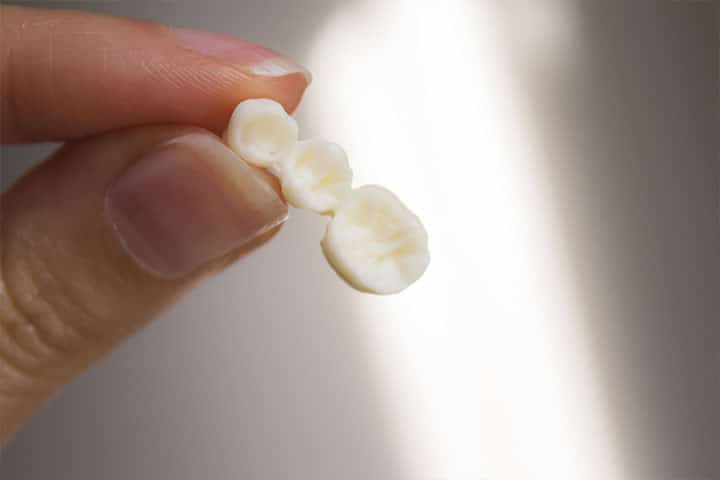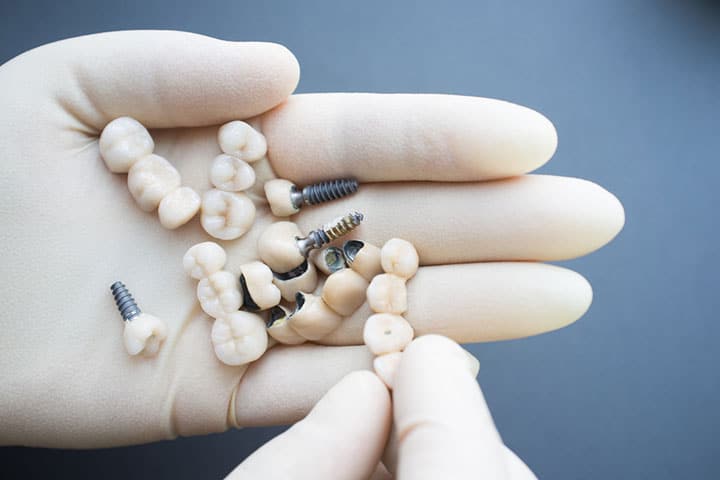Bridge & Denture
Our dentists are experienced in providing bridge and denture solutions according to your dental needs. The differences are explained below but please contact our Patient Care Coordinators to book an appointment to explain the options.


Bridge
A bridge is a custom-made device anchored to adjacent teeth to replace one or more missing teeth. Losing a tooth can cause serious problems for the neighbouring teeth; because the support and chewing forces are altered, the remaining teeth may begin to shift. A bridge stabilises the teeth as it is cemented to the natural teeth next to the space left by the missing tooth. A false tooth (called a pontic) replaces the lost tooth and is attached to the crowns that cover the adjacent teeth. These crowns, which are cemented onto the natural teeth, provide support for the bridge.
An alternative way of replacing missing teeth is implants.
Denture
A denture is a removable replacement for missing teeth and the tissues connected to those teeth. It is made of acrylic plastic and sometimes porcelain and metal materials. A denture closely resembles natural gum tissue and teeth.
Complete dentures replace all of the teeth, while partial dentures fill in the spaces created by missing teeth and prevent other teeth from shifting position. Complete dentures are "immediate" or "conventional."
An immediate denture is a complete or partial denture that is inserted on the same day, immediately following the removal of the natural teeth. This denture acts as a band-aid to protect the tissues and reduce bleeding after tooth extraction. The conventional denture is ready for placement in the mouth about 8 to 12 weeks after the teeth have been removed and the gum tissue has healed. Some dentists may recommend more time before placing a conventional denture.

